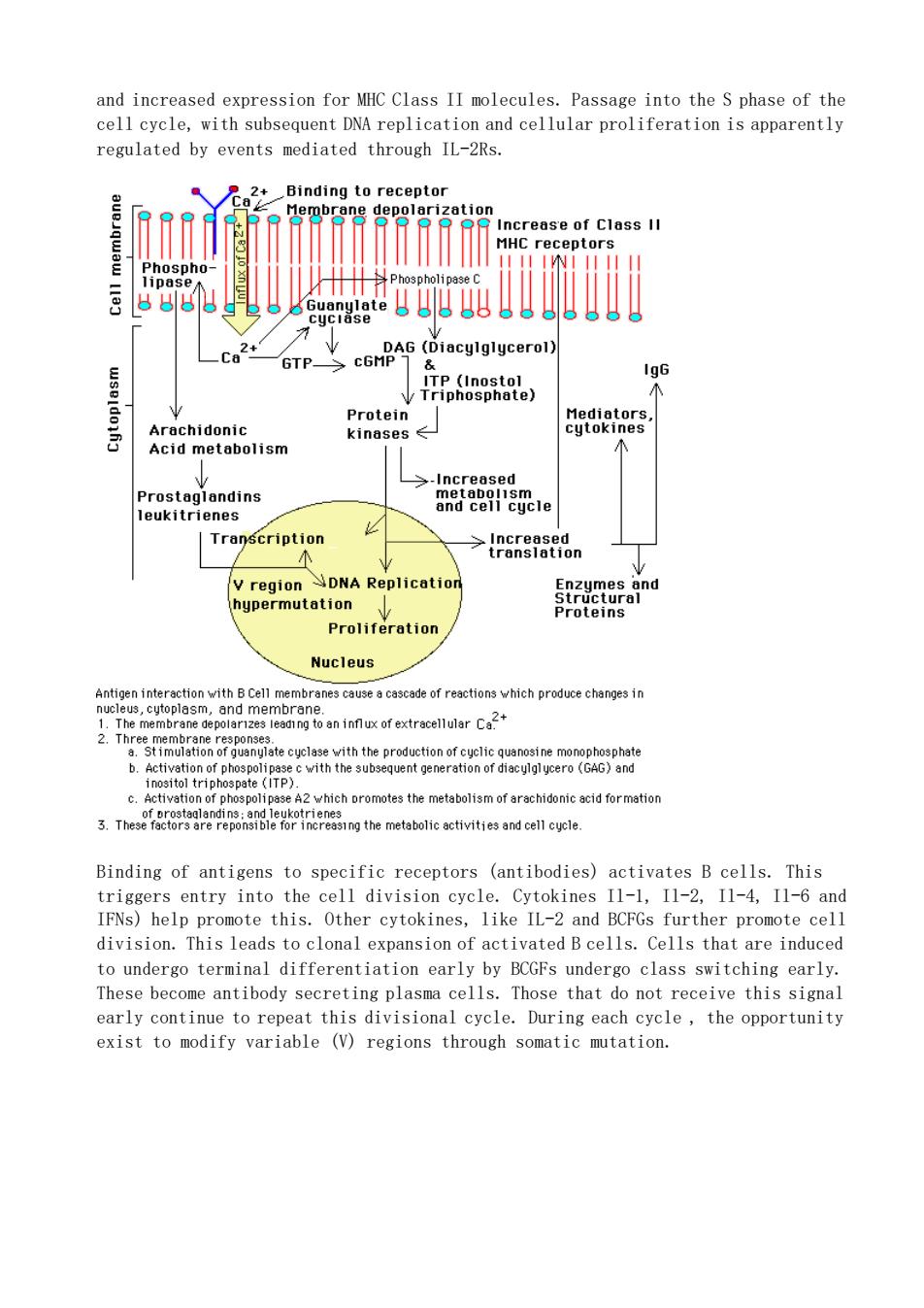正在加载图片...

and increased expression for MHC Class II molecules.Passage into the S phase of the cell cycle,with subsequent DNA replication and cellular proliferation is apparently regulated by events mediated through IL-2Rs. 2+ Binding to receptor Increase of Class II 02 Protein kinases← -Increased din meecycle Transcription v region DNA Replication utation Nucleus TA ofxtraceurCa ee membra P) C. vation of A2 which promotes the metabolism of arachidonic acid formation Binding of antigens to specific receptors (antibodies) activates B cells.This triggers entry into the cell division cycle Cytokines I1-1,I1-2,I1-4,I1-6 and IFNs)help promote this.Other cytokines,like IL-2 and BCFGs further promote cell division.This leads to clonal expansion of activated B cells.Cells that are induced to undergo terminal differentiation early by BCGFs undergo class switching early. These be antibody ting asma cells.Those that do no eceive this signa early continue to repeat this divisional cycle.During each cycle,the opportunity exist to modify variable (V)regions through somatic mutation. and increased expression for MHC Class II molecules. Passage into the S phase of the cell cycle, with subsequent DNA replication and cellular proliferation is apparently regulated by events mediated through IL-2Rs. Binding of antigens to specific receptors (antibodies) activates B cells. This triggers entry into the cell division cycle. Cytokines Il-1, Il-2, Il-4, Il-6 and IFNs) help promote this. Other cytokines, like IL-2 and BCFGs further promote cell division. This leads to clonal expansion of activated B cells. Cells that are induced to undergo terminal differentiation early by BCGFs undergo class switching early. These become antibody secreting plasma cells. Those that do not receive this signal early continue to repeat this divisional cycle. During each cycle , the opportunity exist to modify variable (V) regions through somatic mutation